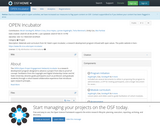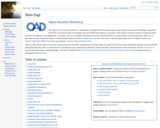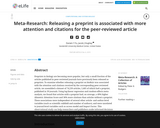
Philip N. Cohen gives an overview of the scientific information ecosystem in the context of COVID-19, with an emphasis on the role of preprints.
- Subject:
- Social Science
- Material Type:
- Lecture
- Author:
- Philip N. Cohen
- Date Added:
- 06/29/2022

Philip N. Cohen gives an overview of the scientific information ecosystem in the context of COVID-19, with an emphasis on the role of preprints.

In this deep dive session, we discuss the current model of scholarly publishing, and highlight the challenges and limitations of this model of research dissemination. We then focus on the value of open access and elaborate on different open access levels (Gold, Bronze, and Green), before discussing how preprints/postprints may be leveraged to promote open access.

The OPEN (Open Project Engagement Network) Incubator is a research development program and modular curriculum designed to advance a project from idea to proof-of-concept, infused with and aware of open scholarship principles and practices.

The Open Access Directory is an online compendium of factual lists about open access to science and scholarship, maintained by the community at large. It exists as a wiki hosted by the School of Library and Information Science at Simmons University in Boston, USA. The goal is for the open access community itself to enlarge and correct the lists with little intervention from the editors or editorial board. For quality control, editing privileges are granted to registered users. As far as possible, lists are limited to brief factual statements without narrative or opinion.

Preprints in biology are becoming more popular, but only a small fraction of the articles published in peer-reviewed journals have previously been released as preprints. To examine whether releasing a preprint on bioRxiv was associated with the attention and citations received by the corresponding peer-reviewed article, we assembled a dataset of 74,239 articles, 5,405 of which had a preprint, published in 39 journals. Using log-linear regression and random-effects meta-analysis, we found that articles with a preprint had, on average, a 49% higher Altmetric Attention Score and 36% more citations than articles without a preprint. These associations were independent of several other article- and author-level variables (such as scientific subfield and number of authors), and were unrelated to journal-level variables such as access model and Impact Factor. This observational study can help researchers and publishers make informed decisions about how to incorporate preprints into their work.